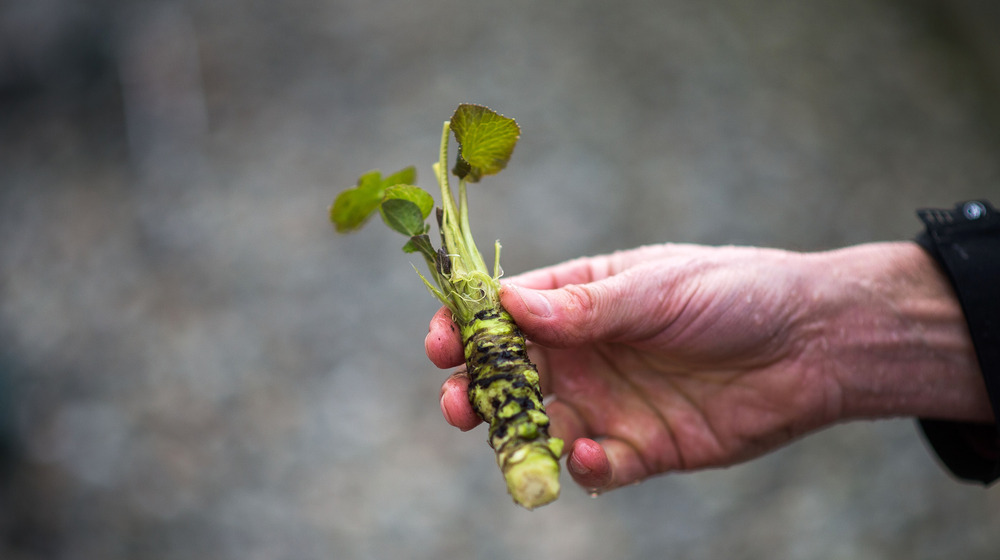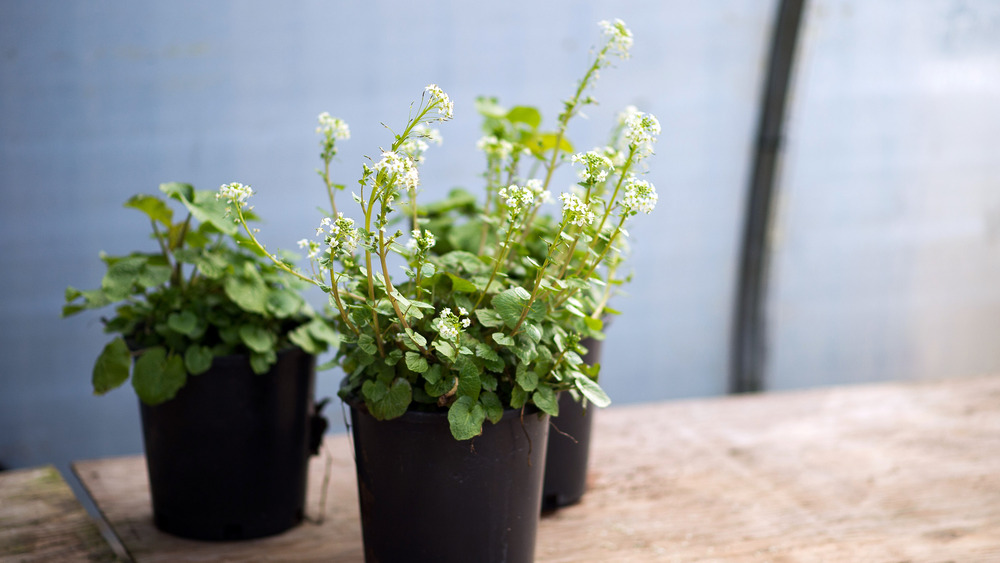The Cost Of Real Wasabi May Surprise You
What's the real reason wasabi costs so much? In a piece about wasabi published in December of 2020, Barron's talked with Toshiya Matsushita, a sushi chef in central Tokyo who goes through a root a day. In doing so, he also spends over $700 on wasabi each month.
Some may suggest that the ridiculous price this root commands is due to the ongoing coronavirus pandemic somehow disrupting the wasabi's cultivation or supply chain. While this may be true to some extent, the BBC reported that a kilo of wasabi, which translates to just over two pounds, fetched $160 in 2014. A 2019 Bustle article places the price for the same amount at $250. Wasabi's extreme cost, which prompted Barron's to dub the root "green gold," is pretty normal then.
However, such a cost is not typically reflected in one's bill at a restaurant. That's because the wasabi provided at a sushi restaurant is some kind of wasabi replacement, either wasabi powder or straight up horseradish. So, Toshiya Matsushita's decision to spend so much on wasabi is a proactive choice to shell out more for quality: "[Imitation wasabi] feels powdery in your mouth and doesn't have much flavor," he explained.
Real wasabi costs quite a bit more
The reason why wasabi is so expensive — and also the reason why everyone just pretends that the green paste served with sushi is wasabi — is that wasabi is the hardest commercial plant to grow in the world. To that end, Business Insider explains that it requires the presence of running spring water at all times and can handle a temperature range of only 46 to 68 degrees Fahrenheit. Additionally, wasabi demands a specific level of humidity and set of nutrients, otherwise the crop will fail. In other words, it naturally grows by mountainous streams, but recreating such an environment at scale is costly.
Horseradish, however, proves a different story. In an article about how to grow your own horseradish (which already indicates that it's a lot easier to grow than wasabi), Good Housekeeping describes the factors that make a good horseradish growing site as follows: "Horseradish thrives in full sun but tolerates light shade. As for soil, horseradish can take almost anything but consistently waterlogged conditions." Cultivating horseradish, then, is the exact opposite of the precise, price-heavy process behind wasabi. While Chef Matsushita will pay for real wasabi, the fact that many others will dye horseradish is quite understandable.

